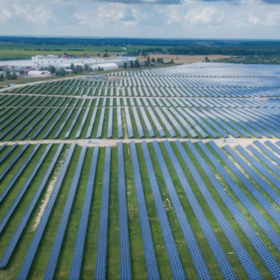India’s ongoing power crisis, the worst in six years, has highlighted the power sector’s dependence on fossil fuels. Compounded by extreme heatwave conditions and recovery of economic activity following the pandemic, increased demand for electricity has driven the government to double down on carbon-intensive sources for power generation.
The current energy consumption pattern is unsustainable, as geopolitical events have driven up the prices of fossil fuels, leading to a shortage of energy. This is evident from the power outages across India.
These power cuts are especially crippling for commercial & institutional (C&I) customers, for whom diesel (a common alternative source of power) is three times more expensive than electricity from the local grid. Outages are even more prolonged in rural areas, where load shedding has decreased electricity supply hours by 16%.
This crisis highlights the urgency of shifting to alternative sources of power, such as solar energy, that can be used to bring down India’s dependence on fossil fuels. C&I customers, especially in rural and peri-urban India, can benefit significantly from reliable and clean energy from solar rooftop installations.
Why rural C&I?
A vast majority of rural C&I customers are underserved by the main grid. Almost 40% of these customers in Uttar Pradesh, Bihar, and Jharkhand are not connected to the grid and rely heavily on alternate sources of electricity, primarily diesel. This segment consumes over one billion litres of diesel each year. The other 60% of customers who are connected to the grid lack quality access and many of these customers continue to use diesel as a backup.
The Government of India has set an ambitious target of installing 40 GW of rooftop solar by 2023. However, only 20% of the rooftop target has been achieved, and only 3.1% of the target for rural India has been installed.
There are millions of rural C&I customers suitable for solar rooftop installations with a potential demand of 16 GW, which could translate into a market opportunity of US$ 11 billion. Currently, only 5% of these customers are being served, despite the cost saving from solar rooftop installations.
Problems and solutions
Despite the high potential of this market, the adoption of rooftop solar offerings by the rural C&I market has been slow. Some of the key challenges include the lack of consumer awareness, low-ticket sizes, fragmented demand, and limited access to finance.
Over 80% of surveyed enterprise customers were not aware of rooftop solutions and their benefits. The low-ticket size, coupled with dispersed demand in rural areas, leads to a high cost of customer acquisition.
Moreover, due to the small size of rural C&I customers and their limited credit history, most developers refuse to enter long-term power purchase agreements (PPAs). Limited credit histories also pose a challenge in accessing finance as banks are risk-averse and do not extend credit without collateral guarantees – which small C&I customers are unable to offer.
The state-level policy and regulatory framework for rooftop solar is also ever-changing, and state utilities are reluctant to give net metering connections to customers.
Solutions for catalyzing the rural C&I market have to be looked at in terms of geographic clusters (as opposed to individual enterprises, which work for large-scale industries) as this allows for the aggregation of demand that makes it easy to run awareness campaigns in a targeted manner.
Market actors such as national and local developers and financing partners have to be drawn in to achieve operational viability and scale in fragmented rural areas. Facilitating access to wholesale capital for retail financiers supplements their liquidity to offer loans for willing rooftop customers, while de-risking their lending risk through guaranteed mechanisms. Moreover, various Development Finance Institutions (DFIs) have a crucial role in extending debt and equity to solar rooftop developers to finance their expansion.
Collaborative and strategic partnerships combined with philanthropic capital can fast-track the adoption of solar rooftop installations and put in place solutions to focus the attention of various sectoral stakeholders on rooftop solar, especially for rural C&I customers, to successfully enable the government to achieve its 16 GW target for non-urban C&I solar rooftop installations by 2023.
The views and opinions expressed in this article are the author’s own, and do not necessarily reflect those held by pv magazine.
This content is protected by copyright and may not be reused. If you want to cooperate with us and would like to reuse some of our content, please contact: editors@pv-magazine.com.








Iam working in power sector from last 12 years and I want to explore more and more the future is solar has began with in ten Years